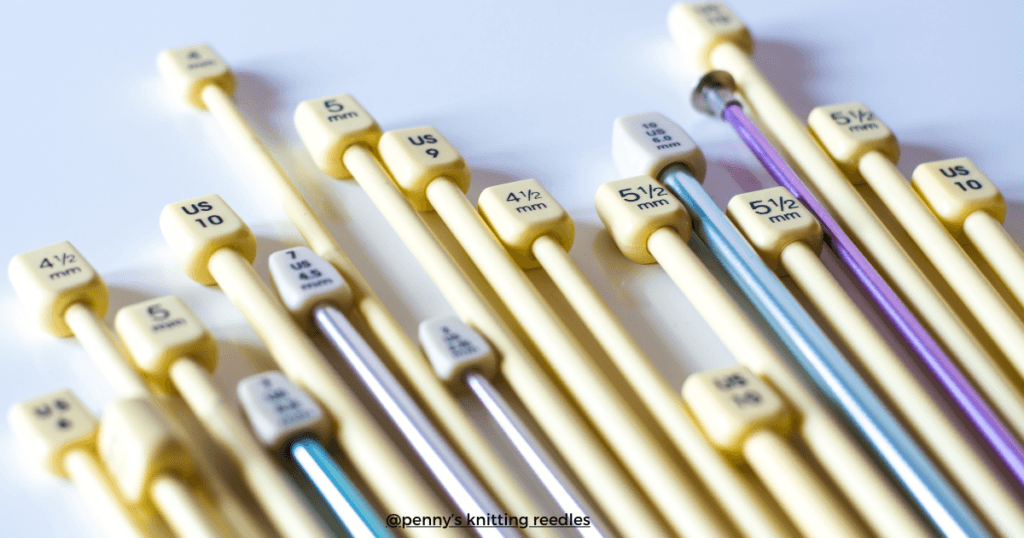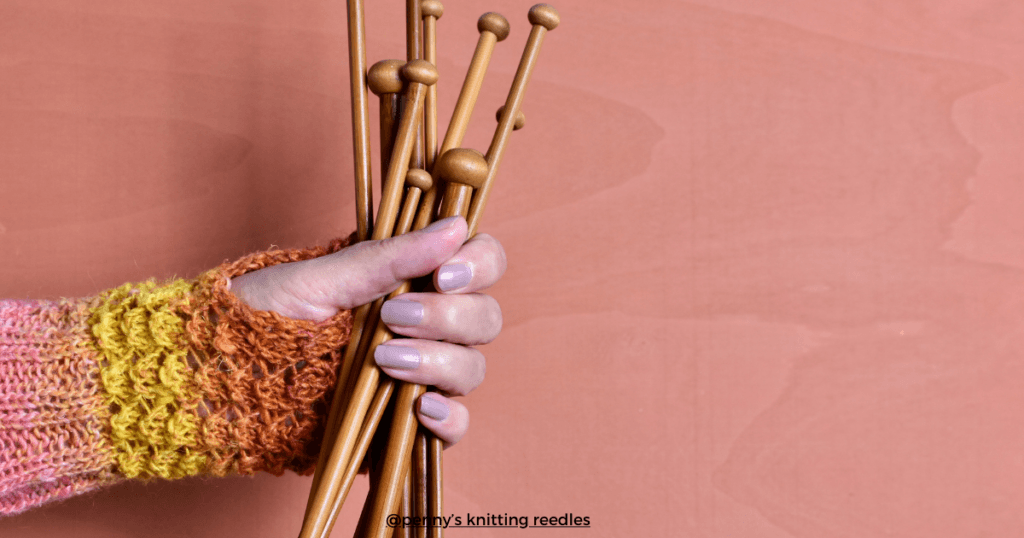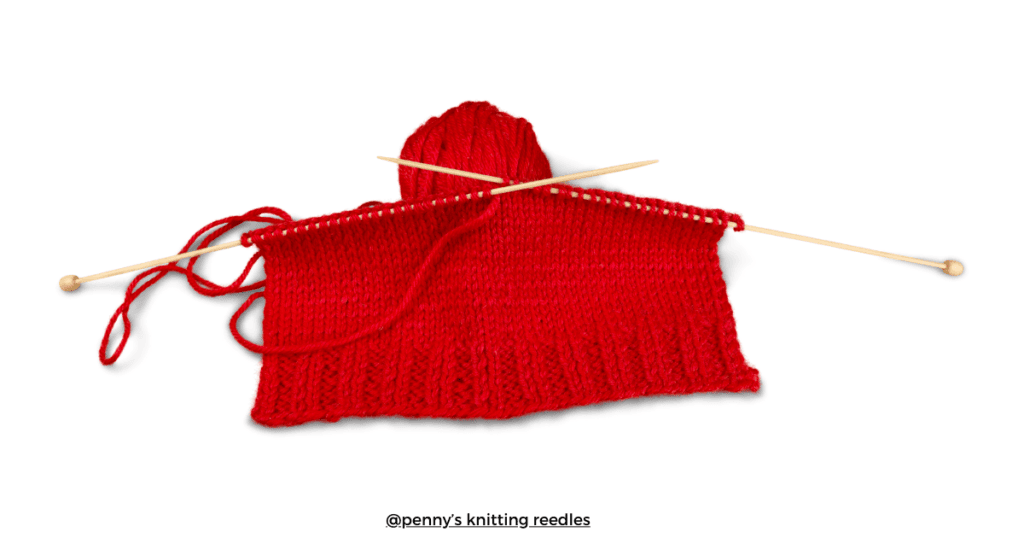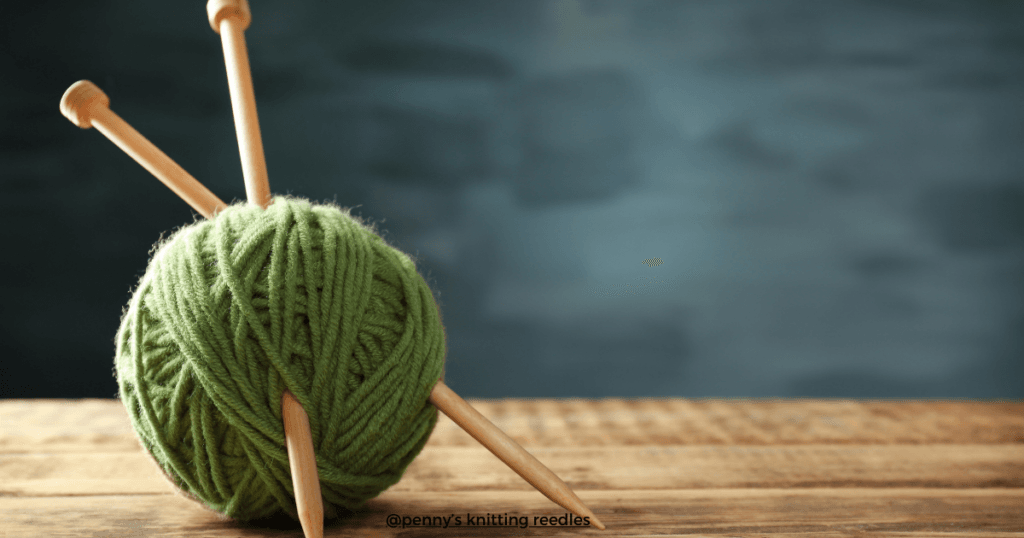A surprising 45 million Americans know how to knit or crochet. The overwhelming choices of knitting needles often intimidate beginners.
Seeing dozens of needle types at craft stores can make anyone’s head spin.
Circular needles, double-pointed needles, and interchangeable ones create endless options.
Single pointed knitting needles remain a classic tool that has proven its worth over time.
These straight needles feature a point on one end and a stopper on the other.
Countless knitters have created beautiful scarves, blankets, and dishcloths with them.
The sort of thing i love about these needles is their versatility for both beginners and experienced crafters.
This piece explores the unique features of these needles and helps you select the perfect ones that match your project’s needs and budget effectively.
What Are Single Pointed Knitting Needles?
Single pointed knitting needles, or straight needles, have two separate rigid lengths with distinct features.
A tapered point sits at one end while a stopper (or knob) occupies the other. These stoppers play a crucial role by keeping your precious stitches secure as you knit.
These needles come in lengths between 10 to 14 inches. Their design works perfectly for flat knitting projects that need back-and-forth movements with work turned at each row’s end.
Here’s a quick look at how different needle types compare:
- Single Pointed Needles: Have one working end and a stopper; ideal for flat projects
- Circular Needles: Two points connected by a flexible cord; suitable for both flat and round knitting
- Double Pointed Needles (DPNs): Points on both ends; we used these mainly for knitting in the round
Single pointed needles offer a unique advantage – knitters can rest one needle against their body while working, something other needle types don’t allow. But it’s worth mentioning that they can only hold a limited number of stitches. This makes them better suited to smaller projects or garment pieces rather than large items like blankets or shawls.
Why Choose Single Pointed Knitting Needles?

Choosing your first knitting needles is easier with single points. These classic tools are the most straightforward option that beginners can use among all needle types.
Single pointed needles give new knitters several advantages when starting their experience. They help teach simple techniques – from casting on to basic stitches and binding off. Their design works well with English or Scottish-style knitting.
These needles excel at flat knitting projects. You can create beautiful:
- Scarves and shawls
- Dishcloths
- Baby blankets
- Flat-knitted garment pieces
Single pointed needles come in different materials that each bring unique benefits:
- Bamboo: Grips yarn better, making it ideal for beginners and preventing slipping
- Wood: Offers a warm feel with excellent yarn control
- Metal: Perfect for speed and smooth stitch movement
- Plastic: Lightweight and budget-friendly
You should know about some limitations. Single pointed needles work only with flat knitting projects; you can’t use them for circular knitting. They also hold fabric only about 60% wider than the needle length. The weight of larger projects like afghans can strain your hands if they hang from these needles.
Single point needles still remain popular because you can find them easily even in remote areas. Knitters love them, especially if they prefer to rest one needle against their body while working – a unique feature of this needle type.
How to Use Single Pointed Knitting Needles
Ready to start your first project with single pointed needles? Let’s explore the simple techniques you need to create beautiful knitted pieces.
The journey starts with casting on to create your first row of stitches. The single cast-on method works best for newcomers. Place a slip knot on your left needle and create loops by wrapping the yarn around your thumb. These loops are then transferred onto your needle. Your tension should stay loose because tight cast-on stitches make knitting your first row difficult.
The simple foundations include knit and purl stitches. The knit stitch requires you to insert your right needle through the front of the loop, wrap the yarn, and pull through. The purl stitch requires your working yarn in front of you before you insert the needle.
The binding-off technique helps you finish your work. Knit two stitches, then lift the first stitch over the second and off the needle. This pattern continues until one stitch remains. A final yarn pull secures it.
These tips help maintain even tension:
- Your yarn needs consistent holding while knitting
- Stitches should stay close to needle tips
- The yarn between stitches shouldn’t be too tight
- Regular work checks help spot issues
Point protectors protect your work from dropped stitches. Count your stitches often. A dropped stitch shouldn’t cause panic. A crochet hook comes in handy to pick up these dropped stitches.
A simple garter stitch scarf makes an ideal first project. You’ll practice the simple knit stitch and create something useful at the same time.
Choosing the Right Single Pointed Knitting Needles

Your knitting experience can improve significantly with the right single point knitting needles. Let’s look at what makes the perfect choice.
Each type of material brings its advantages:
- Bamboo: Provides excellent grip and works great with slippery yarns like silk
- Wood: Gives a warm feeling with slight flexibility
- Metal: Makes knitting faster and works well with wool yarns
- Plastic: The most budget-friendly option, ideal for beginners
The needle length ranges from 25cm (10 inches) to 40cm (16 inches). Pick the right length based on your project:
- Small projects (scarves, dishcloths): 25cm needles
- Medium projects (shawls): 30-35cm needles
- Larger projects (blankets): 35-40cm needles
The right needle size can make your knitting easier. Beginners should start with sizes US 6 (4mm), US 7 (4.5mm), or US 8 (5mm) for DK and worsted weight yarns. These sizes help you see your stitches better while you work.
Your yarn label’s recommended needle size is the best place to start for the right gauge. A one-millimeter change can affect your project’s size by a lot.
Best Projects for Single Pointed Knitting Needles

Are you looking to begin your first knitting project? Here are some beginner-friendly options that work well with single-pointed knitting needles.
Scarves are a great first project. They need only simple knit and purl stitches, and you’ll have something to wear once you’re done. A garter stitch scarf helps you practice tension control.
Dishcloths make excellent learning projects you can complete quickly and use immediately. These projects are a great way to get practice with new stitches, and experienced knitters can finish one in just 45 minutes. They also serve as eco-friendly alternatives to disposable cleaning products.
Baby blankets provide the proper challenge for knitters ready to advance. A seed stitch pattern creates a beautiful texture and needs just one ball of yarn.
These projects offer several advantages to new knitters:
- Help you learn simple stitches
- Use flat knitting techniques only
- Take little time to complete dishcloths and scarves
- Allow room to learn from mistakes
- Build proper tension control
Choose your first pattern based on your comfort level:
- Absolute Beginner: Garter stitch dishcloth
- Confident Beginner: Seed stitch scarf
- Ready for More: Simple striped baby blanket
The single point needles we discussed earlier suit these projects well. Bamboo or wooden needles provide extra grip that helps you maintain control.
Where to Buy Single Point Knitting Needles
Ready to buy your first set of single pointed knitting needles? You are in the right place!
Penny’s Knitting Reedles is an excellent option. Our staff’s expertise will help you make the right choice.
Smart shopping can save you money. We give deals on needle sets.
Sign up for our newsletters and receive exclusive coupons and sale alerts.
Conclusion
Single pointed knitting needles are excellent tools for beginners and experienced knitters.
Their straightforward design helps them learn simple techniques quickly, and their versatility makes them perfect for flat-knitting projects.
These classic needles deserve a spot in every knitter’s collection. Choosing bamboo for better grip, metal for speed, or wood for comfort should align with your knitting style and project requirements.
Here are essential points to remember as you begin your knitting experience:
- Your yarn weight determines the correct needle size
- The project width guides your needle length selection
- Scarves or dishcloths make great starter projects
- Quality materials fit your budget matters most
Bamboo needles prove ideal for first projects. They provide excellent control that helps build confidence with simple stitches and techniques.
A wonderful creative experience awaits you – pick up those single-pointed needles and craft something beautiful today.
FAQs
What types of projects are best suited for single pointed knitting needles?
Single pointed knitting needles are ideal for flat knitting projects such as scarves, dishcloths, and baby blankets. They’re particularly well-suited for beginners learning basic stitches and techniques.
Can I use single pointed needles for all knitting projects?
While single pointed needles are versatile, they have limitations. They’re not suitable for circular knitting or very large projects. Circular or double-pointed needles may be more appropriate for items like sweaters or hats.
What materials are single pointed knitting needles available in?
Single pointed knitting needles come in various materials including bamboo, wood, metal, and plastic. Each material offers different benefits – bamboo and wood provide better grip, metal allows for faster knitting, and plastic is lightweight and budget-friendly.
How do I choose the right size single pointed knitting needles?
The right needle size depends on your yarn weight and desired fabric density. For beginners, sizes US 6 (4mm) to US 8 (5mm) are recommended for medium-weight yarns. Always check your yarn label for suggested needle sizes.
Where can I buy quality single pointed knitting needles?
Quality single pointed knitting needles can be purchased from our website on the Shop page.
For beginners, mid-range bamboo needles often provide good value. Look for sales and consider buying sets for better value per needle.
